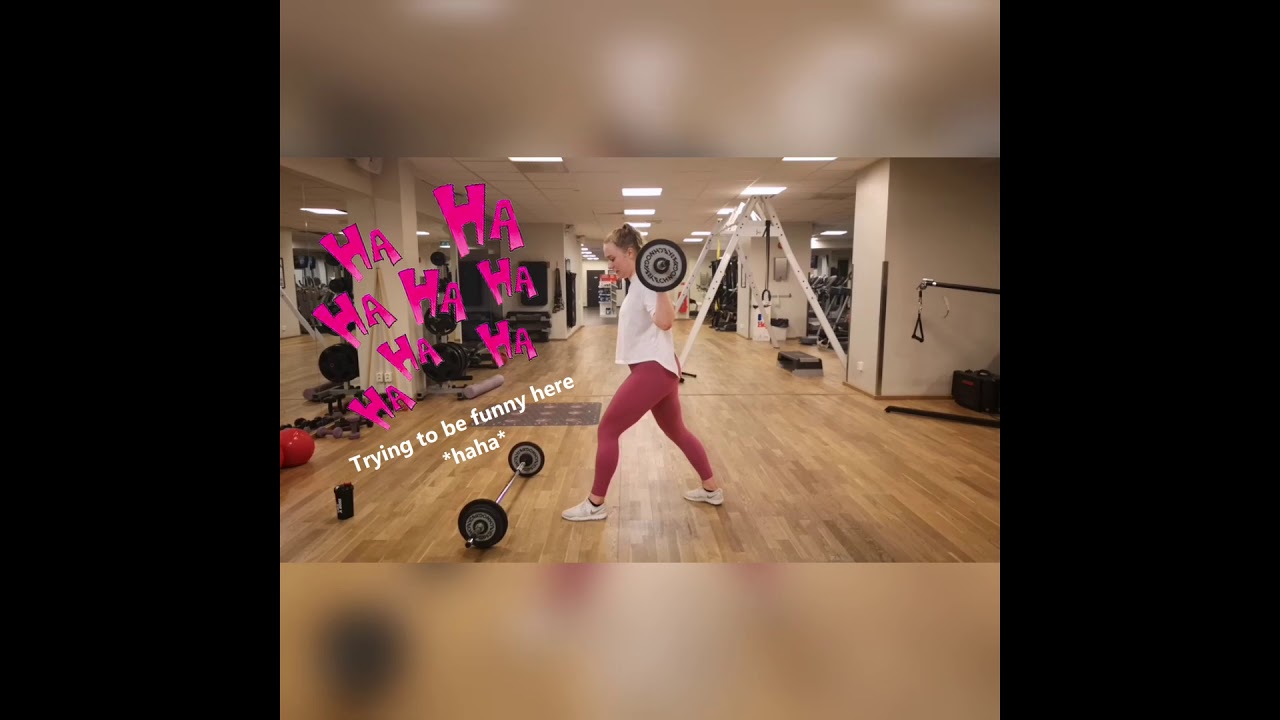
Avoid Common Lunge Mistakes for Better Results
Common lunge mistakes to avoid are crucial for maximizing your workout and preventing injuries. Lunges are a fantastic exercise for strengthening your lower body, but improper form can lead to discomfort and even pain. Whether you’re a seasoned gym-goer or just starting your fitness journey, understanding the nuances of lunges is essential.
This guide will delve into the most common mistakes people make during lunges, providing clear explanations and actionable tips to help you refine your technique. We’ll cover everything from proper foot placement and knee alignment to core engagement and breathing.
By addressing these common pitfalls, you can ensure you’re performing lunges effectively and safely, unlocking their full potential for building strength and improving your overall fitness.
Form and Posture: Common Lunge Mistakes To Avoid
Maintaining proper form and posture during lunges is crucial for maximizing their benefits and preventing injuries. A neutral spine, balanced stance, and controlled movements are essential for a safe and effective lunge.
Neutral Spine Alignment
A neutral spine is essential for proper posture and biomechanics during lunges. It helps distribute weight evenly, reduces strain on the back, and allows for efficient power transfer.
- Engage Your Core:Actively engage your abdominal muscles to support your spine and prevent excessive arching or rounding.
- Keep Your Back Straight:Imagine a straight line running from your head to your tailbone. Avoid rounding your upper back or tilting your pelvis forward.
- Maintain a Slight Natural Curve:Your lower back should have a slight inward curve, while your upper back should maintain a natural curve.
Common Posture Errors and Corrections
- Rounding the Back:This can put excessive strain on your spine and lead to back pain. To correct this, focus on engaging your core and keeping your back straight.
- Leaning Forward Excessively:This can shift your weight forward, putting pressure on your knees and ankles. Maintain a balanced stance with your torso upright and your hips aligned with your knees.
Foot Placement and Direction

Proper foot placement is crucial for executing lunges effectively and safely. It ensures optimal balance, stability, and prevents strain on your joints.
Foot Placement
The distance between your feet and the angle of your front foot are key factors in achieving the correct lunge form.
When it comes to lunges, proper form is key to avoiding injuries. One common mistake is pushing your knee too far forward, which can strain your joints. Another is not engaging your core, which can lead to back pain. Just like with lunges, mastering strategies for eating in moderation takes practice and mindful attention.
You want to ensure your body gets the fuel it needs without overdoing it, just like you want to ensure your lunge form is correct to avoid strain. By focusing on proper form and listening to your body, you can avoid common lunge mistakes and maximize your workout results.
- Your front foot should be positioned approximately 1 to 2 feet in front of your back foot. This creates a staggered stance that allows for a greater range of motion and a deeper lunge.
- The front foot should be pointed slightly outward, at an angle of about 15-30 degrees. This angle helps to align your knee with your toes and prevents excessive inward rotation of the knee, which can increase the risk of injury.
Importance of Knee Alignment
It’s essential to ensure that your front knee is pointing in the same direction as your toes. This alignment helps to maintain proper biomechanics and distributes the load evenly across your joints.
When your knee tracks over your toes, it helps to prevent stress on your knee joint and allows for a smoother, more controlled movement.
Examples of Incorrect Foot Placement
- Feet too close together:This can limit your range of motion and make it difficult to achieve a deep lunge. It can also put excessive stress on your knees and ankles.
- Feet too far apart:This can lead to instability and make it harder to maintain your balance. It can also increase the risk of tripping or falling.
- Front foot pointed straight ahead:This can cause your knee to track inward, putting stress on your knee joint and increasing the risk of injury.
- Front foot pointed too far outward:This can make it difficult to maintain balance and can also increase the risk of knee injury.
Tips for Adjusting Foot Placement
- Experiment with different foot distances and anglesto find what feels most comfortable and balanced for you.
- Focus on keeping your front knee aligned with your toesthroughout the entire lunge motion.
- Use a mirror or video recordingto help you visualize your form and identify any areas that need adjustment.
- Practice lunges slowly and with controlled movementsto improve your balance and coordination.
Breathing and Rhythm
Breathing correctly during lunges is essential for maintaining balance, stability, and maximizing your performance. It helps you engage your core muscles, improve oxygen intake, and prevent fatigue.
Coordinating Breathing with Movement
The key to proper breathing during lunges is to coordinate your breath with the movement. Inhale as you lower into the lunge, and exhale as you push back to the starting position. This synchronized breathing pattern helps you control the movement, engage your core, and optimize your energy expenditure.
Mastering the lunge is a great way to build lower body strength, but it’s easy to fall into bad habits. If you find yourself feeling bored with your home workouts, check out 8 fun ways to avoid home workout boredom for some inspiration.
Once you’ve injected some fun into your routine, make sure you’re keeping your back straight and your front knee aligned with your toes during your lunges to avoid injuries.
Inhale during the lowering phase, exhale during the pushing phase.
Tips for Maintaining a Steady Breathing Pattern
- Focus on your breath:Pay attention to your breathing throughout the lunge. This will help you stay conscious of your breathing pattern and make any necessary adjustments.
- Breathe deeply:Take full, deep breaths, allowing your diaphragm to expand fully. This ensures you’re getting enough oxygen to fuel your muscles.
- Avoid holding your breath:Holding your breath can lead to tension and instability. Keep your breath flowing throughout the movement.
- Practice controlled breathing:Practice deep, controlled breathing techniques outside of your lunges to improve your overall breathing efficiency.
Impact of Improper Breathing on Lunge Performance
- Reduced core engagement:Holding your breath can lead to a decrease in core engagement, affecting your stability and balance.
- Increased fatigue:Improper breathing can lead to inefficient oxygen delivery to your muscles, causing faster fatigue.
- Loss of balance:Holding your breath can restrict your diaphragm movement, which can affect your balance and coordination.
- Increased risk of injury:Lack of proper breathing can lead to muscle imbalances and increased stress on your joints, raising your risk of injury.
Lunge Variations and Modifications
Lunges are a versatile exercise that can be modified to target different muscle groups and suit various fitness levels. Exploring lunge variations allows you to challenge yourself and keep your workouts engaging.
One common lunge mistake is not engaging your core, which can lead to back strain. Another mistake is not keeping your knee aligned with your toes, which can put pressure on your joints. To avoid these pitfalls, remember to focus on proper form and engage your core.
A strong core is essential for any exercise, and it’s especially important when doing lunges. And if you’re struggling to motivate yourself to eat healthy, check out these ways to learn to love or like eating healthy.
Fueling your body with nutritious foods will give you the energy you need to power through your workouts and avoid injury.
Forward Lunges
Forward lunges are a classic lunge variation that primarily targets the quadriceps, glutes, and hamstrings.
- To perform a forward lunge, stand with your feet hip-width apart. Take a large step forward with one leg, bending your front knee to a 90-degree angle while keeping your back knee close to the ground. Push off with your front foot to return to the starting position and repeat on the other side.
Reverse Lunges
Reverse lunges engage the same muscle groups as forward lunges but with a slightly different emphasis.
- To perform a reverse lunge, stand with your feet hip-width apart. Take a large step backward with one leg, bending your back knee to a 90-degree angle while keeping your front knee slightly bent. Push off with your back foot to return to the starting position and repeat on the other side.
Walking Lunges
Walking lunges are a dynamic variation that combines the movement of a forward lunge with continuous walking.
- To perform a walking lunge, stand with your feet hip-width apart. Take a large step forward with one leg, bending your front knee to a 90-degree angle while keeping your back knee close to the ground. Push off with your front foot to return to the starting position and immediately step forward with the other leg, repeating the lunge motion.
Continue walking in this manner for a predetermined distance or time.
Lateral Lunges, Common lunge mistakes to avoid
Lateral lunges target the inner and outer thighs, glutes, and hip abductors.
- To perform a lateral lunge, stand with your feet hip-width apart. Take a large step to the side with one leg, keeping your toes pointed forward. Bend your knee and lower your body until your thigh is parallel to the ground.
Push off with your foot to return to the starting position and repeat on the other side.
Modifications
Lunges can be modified to suit different fitness levels and goals.
- For beginners, consider performing lunges with a shorter stride length or holding onto a stable surface for balance.
- To increase the challenge, try adding weights or resistance bands to your lunges.
- For those with knee pain, consider performing lunges with a slightly wider stance or using a cushioned surface.
Incorporating Lunge Variations into a Workout Routine
Lunge variations can be incorporated into a variety of workout routines.
- Try performing lunges as part of a lower body strength training circuit or as a warm-up before a cardio workout.
- You can also incorporate lunge variations into your daily routine by using them as a way to move around your home or office.
Safety and Precautions

Lunges are a great exercise for strengthening your lower body, but it’s important to take precautions to avoid injury. Here are some tips to keep in mind:
Potential Risks
Lunges can put stress on your knees, ankles, and lower back, so it’s important to be aware of the potential risks. Common injuries associated with lunges include:
- Knee injuries:Overstressing the knee joint during lunges can lead to injuries like anterior cruciate ligament (ACL) tears, meniscus tears, or patellofemoral pain syndrome.
- Muscle strains:Improper form or pushing yourself too hard can lead to muscle strains in the quadriceps, hamstrings, or groin muscles.
- Balance issues:Lunges can be challenging for people with balance problems, increasing the risk of falls.
Safety Tips
Here are some tips to help you perform lunges safely:
- Start slowly:Begin with a small number of repetitions and gradually increase the intensity and duration as you get stronger.
- Use proper form:Focus on maintaining good form throughout the exercise. This includes keeping your back straight, your core engaged, and your knees aligned with your toes.
- Listen to your body:Pay attention to any pain or discomfort. Stop if you feel any sharp pain or if you experience any unusual sensations.
- Use a stable surface:Perform lunges on a firm, level surface to prevent tripping or slipping.
- Avoid overextending your knee:Keep your front knee slightly bent throughout the exercise to avoid putting excessive stress on your knee joint.
Warm-up and Cool-down
It’s essential to warm up your muscles before performing lunges and cool down afterwards.
- Warm-up:A warm-up should include light cardio, such as walking or jogging, followed by dynamic stretches, such as arm circles, leg swings, and torso twists.
- Cool-down:After your workout, spend a few minutes doing static stretches, such as holding a hamstring stretch or a quad stretch.
Professional Guidance
If you have any concerns about your ability to perform lunges safely, consult with a qualified fitness professional or physical therapist. They can assess your fitness level, provide personalized guidance, and help you modify the exercise to suit your needs.
Ending Remarks
Mastering lunges requires attention to detail and consistent practice. By understanding the common mistakes and implementing the corrective actions, you can elevate your lunge game and experience the benefits of this powerful exercise. Remember, proper form is key to maximizing results and minimizing the risk of injury.
So, pay attention to your body, listen to your form, and enjoy the journey of perfecting your lunges!






